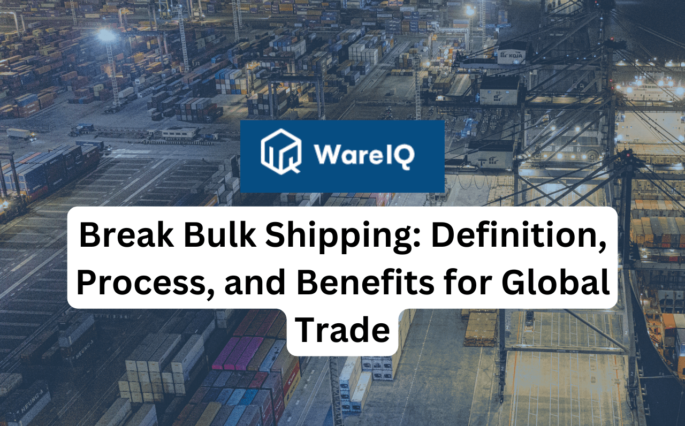What Is an Import General Manifest (IGM) in International Shipping?

In the domain of international shipping, numerous documents and processes facilitate the smooth movement of goods across borders. One such essential document is the Import General Manifest (IGM), a key component in the logistics chain. The Import General Manifest holds pivotal importance in the customs clearance process and serves as a comprehensive record of all cargo destined for a particular port of arrival.
Understanding the intricacies of the Import General Manifest is crucial for stakeholders involved in international trade, including shippers, freight forwarders, customs officials, and port authorities. This article aims to elucidate the significance of the Import General Manifest in international shipping, shedding light on its purpose, role, and implications for the global logistics landscape.
- What Is the Import General Manifest?
- Role of Import General Manifest in International Shipping
- Process to Get or Make Import General Manifest (IGM)
- Conclusion
- FAQs About Import General Manifest
- What is the full form of IGM in Shipping?
- What is the difference between an Import General Manifest (IGM) and a Bill of Lading (B/L)?
- Is the Import General Manifest (IGM) required for all modes of transportation, including air and sea freight?
- What happens if there are discrepancies between the information provided in the Import General Manifest (IGM) and the actual cargo being imported?
- Can the Import General Manifest (IGM) be amended or updated after submission to customs?
- Are there any specific regulations or requirements for preparing an Import General Manifest (IGM)?
- What is the significance of the Import General Manifest (IGM) in terms of cargo security and risk management?
What Is the Import General Manifest?
The Import General Manifest (IGM) is a critical document used in international shipping to declare and record details of all cargo arriving at a specific port of destination. Essentially, it serves as a comprehensive inventory of goods being imported into a country, providing essential information such as the description of goods, quantity, weight, value, consignee details, and the vessel or flight number.
The IGM is prepared by the carrier or their authorised agent and submitted to the customs authorities of the destination country before the arrival of the vessel or flight. This document enables customs officials to efficiently assess and process incoming cargo, ensuring compliance with import regulations, assessing duties and taxes, and facilitating the timely release of goods for further transportation and distribution within the country. Overall, the Import General Manifest plays a crucial role in streamlining the customs clearance process and maintaining transparency and accountability in international trade transactions.
Role of Import General Manifest in International Shipping
The Import General Manifest (IGM) serves several pivotal roles in the realm of international shipping:
1. Customs Clearance
The IGM provides customs authorities with detailed information about incoming cargo, enabling them to conduct thorough inspections, assess duties and taxes, and enforce import regulations effectively.
2. Cargo Tracking
By documenting the details of each consignment, the IGM facilitates accurate tracking and tracing of cargo throughout its journey, from the point of origin to the final destination.
3. Security Screening
Import General Manifests help authorities identify and screen high-risk shipments, enhancing security measures and mitigating the risk of illegal or hazardous goods entering the country.
4. Port Operations
Port authorities utilise information from the IGM to efficiently allocate resources, manage port congestion, and coordinate the movement of cargo within port facilities, thereby optimising port operations.
5. Trade Data Analysis
Governments and industry stakeholders analyse data from Import General Manifests to gain insights into trade flows, import trends, and market dynamics, facilitating informed decision-making and policy formulation.
The Import General Manifest plays a crucial role in ensuring the smooth and secure movement of goods across international borders, facilitating trade while safeguarding national security and regulatory compliance.
Process to Get or Make Import General Manifest (IGM)
The process of obtaining or preparing an Import General Manifest (IGM) involves several steps to ensure compliance with regulatory requirements and facilitate smooth customs clearance:
1. Data Collection
The carrier or their authorised agent collects essential information about the incoming cargo, including the description of goods, quantity, weight, value, consignee details, and the vessel or flight number.
2. Manifest Preparation
Using the gathered information, the carrier or agent prepares the Import General Manifest according to the format prescribed by the customs authorities of the destination country. This may involve entering data manually or utilising electronic manifesting systems for streamlined processing.
3. Submission to Customs
Once the Import General Manifest is prepared, it is submitted to the customs authorities of the destination country well in advance of the arrival of the vessel or flight carrying the cargo. This allows customs officials to review the manifest, conduct risk assessments, and prepare for the inspection and clearance of incoming cargo.
4. Customs Processing
Upon receipt of the Import General Manifest, customs officials verify the accuracy and completeness of the information provided. They may conduct additional checks or inspections as necessary to ensure compliance with import regulations, assess duties and taxes, and mitigate potential risks associated with the incoming cargo.
5. Cargo Release
After completing the necessary customs formalities and clearance procedures, customs authorities authorise the release of the cargo for further transportation and distribution within the country. The Import General Manifest serves as a reference document throughout the customs clearance process, providing a detailed record of the imported goods and their consignees.
Conclusion
The Import General Manifest (IGM) plays a crucial role in the international shipping and customs clearance process, serving as a detailed record of all cargo arriving at a designated port of destination. Through its meticulous documentation of goods, the IGM facilitates efficient customs processing, cargo tracking, and regulatory compliance, thereby ensuring the smooth flow of goods through the global supply chain.
By adhering to prescribed procedures and submitting accurate and timely Import General Manifests, carriers and their agents contribute to the seamless movement of goods across international borders, fostering trade and commerce on a global scale. The Import General Manifest stands as a testament to the collaborative efforts of stakeholders in the shipping industry to uphold transparency, accountability, and efficiency in international trade operations.
Related read: International logistics challenges and opportunities in global markeplace
- Pan India Fulfillment & Darkstore Network: Plug-and-play fulfillment infrastructure with no minimums, which is compliant with Amazon Seller Flex, Flipkart Assured, Myntra and other marketplaces
- Inventory & Network Planning Excellence: Best-in-class AI models for sales forecasting, product segmentation, and inventory management to reduce inventory by 40% and increase revenue by 10%.
- Vertically Integrated Fulfillment Tech Stack: Our Fulfillment Tech Solution supports integrations with 20+ top marketplaces & D2C platforms, and prominent national, regional and hyperlocal couriers, enhancing reach by covering deliveries for 27,000+ pin codes
- Supply Chain Productivity Applications: Integrate a host of supply chain productivity apps with a single-click to your existing CRMs, ERPs & accounting software to manage your logistics workflows from one command center. Use Apps like RTO Shield to get 100% RTO protection, Branded Tracking to turn your order tracking page into a profitable marketing channel, and many more.
Trusted by 300+ top Indian brands, we are helping them accelerate online sales and expedite their growth through a synergistic combination of advanced technology, robust fulfillment infrastructure & seller enablement services!WareIQ is backed by leading global investors including Y Combinator, Funders Club, Flexport, Pioneer Fund, Soma Capital, and Emles Venture Partner.
FAQs About Import General Manifest
What is the full form of IGM in Shipping?
The acronym “IGM” stands for “Import General Manifest” in the context of shipping and international trade. It represents a vital document that outlines the details of all cargo arriving at a specific port of destination.
What is the difference between an Import General Manifest (IGM) and a Bill of Lading (B/L)?
The Import General Manifest (IGM) provides a comprehensive record of all cargo arriving at a port of destination, while the Bill of Lading (B/L) is a contractual document issued by the carrier to the shipper, acknowledging receipt of goods for shipment. While both documents are essential in international shipping, they serve distinct purposes: the IGM is for customs clearance and cargo tracking, while the B/L is for contractual and legal purposes.
Is the Import General Manifest (IGM) required for all modes of transportation, including air and sea freight?
Yes, the IGM is required for all modes of transportation, including air and sea freight. It serves as a mandatory document for customs clearance and regulatory compliance, regardless of the mode of transport used to import goods into a country.
What happens if there are discrepancies between the information provided in the Import General Manifest (IGM) and the actual cargo being imported?
Discrepancies between the information in the IGM and the actual cargo may lead to delays in customs clearance and possible penalties or fines. It is essential for carriers and their agents to ensure the accuracy and completeness of the information provided in the IGM to avoid such issues.
Can the Import General Manifest (IGM) be amended or updated after submission to customs?
In some cases, amendments or updates to the IGM may be allowed by customs authorities, particularly if there are genuine errors or changes in the cargo details. However, such amendments are subject to approval by customs officials and may incur additional administrative procedures or fees.
Are there any specific regulations or requirements for preparing an Import General Manifest (IGM)?
Yes, each country may have its specific regulations and requirements governing the preparation of IGM. It is essential for carriers and their agents to familiarise themselves with the applicable regulations and adhere to them to ensure compliance and smooth customs clearance processes.
What is the significance of the Import General Manifest (IGM) in terms of cargo security and risk management?
The Import General Manifest serves as a crucial tool for cargo security and risk management by enabling customs authorities to identify and screen high-risk shipments effectively. By providing detailed information about incoming cargo, the IGM helps customs officials assess potential security threats and take appropriate measures to mitigate risks associated with international trade.








